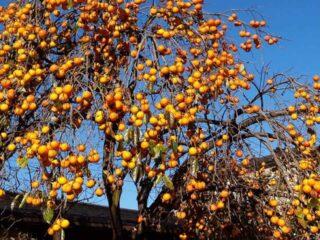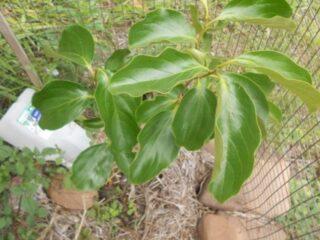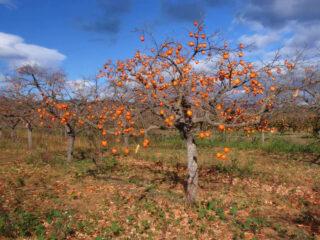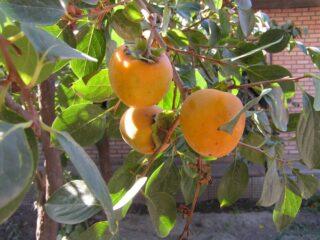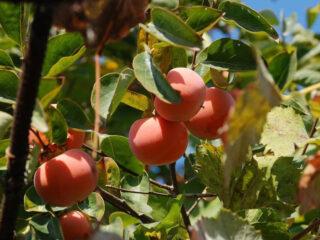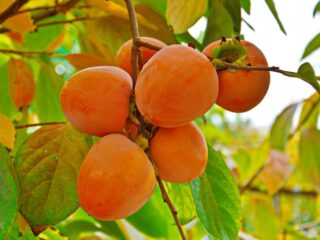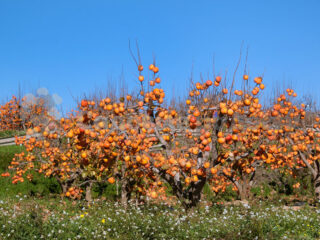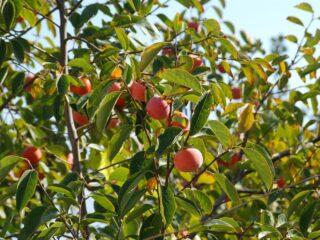Content
Persimmon Honey is a real fall hit, delighting not only with its orange-sunny color, but also with an amazing taste reminiscent of flower honey. In addition, the fruits contain a whole storehouse of useful vitamins that the body needs in anticipation of the winter cold.
Description of persimmon variety Honey
Persimmon Honey is a low tree with a slightly curved trunk and a wide "ragged" crown. The bark of the tree is dark gray, the branches are branched, the leaves are simple, oval, with pointed ends. The upper part of the leaf plates has a dark green color, the lower one is lighter. Leaves are leathery, with well-defined veins.
The variety blooms in late May or early June, depending on climatic conditions. The inflorescences of the culture are small, almost inconspicuous. They are white or yellowish cups, collected from four petals.
The fruits (from a botanical point of view, these are berries) are juicy, fleshy, slightly elongated ovoid. The skin is thin, smooth. The pulp is bright orange. When ripe, the berries have a characteristic jelly-like structure. Due to the thin skin and too soft consistency, there are problems with transportation, so the fruits are picked slightly unripe.
This variety is seedless. It is distinguished by a sweet taste with pronounced honey notes. Some people consider the Honey variety too cloying. The harvest of juicy ripe berries begins to be harvested in October. Harvesting can continue until mid-November (depending on the region of growth).
Under favorable circumstances, the tree bears fruit for 50-60 years. The first harvest is obtained already in the second year of the tree's life. The culture enters full fruiting in the tenth year.
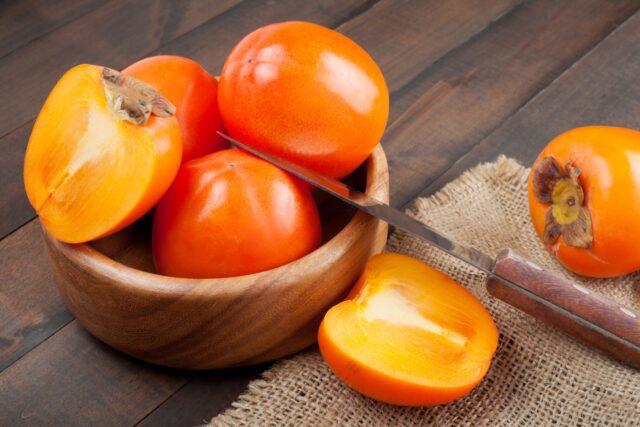
The second name of the Honey persimmon is Mandarin
This variety is referred to as sun-loving. At the same time, it has an average resistance to frost. Persimmon does not require a large amount of rainfall, preferring a nutritious soil, therefore, the tree rarely takes root on sandy soil.
Does persimmon knit honey
Tannins are responsible for the viscosity. These tannins, coming into contact with the mucous membrane, provoke protein coagulation. As a result, a specific astringent taste arises.
Tannins are present in every variety and are capable of:
- constrict blood vessels;
- reduce the secretion of the salivary glands;
- inhibit gastrointestinal motility.
Thus, only unripe fruits affect the body. Ripe specimens of the Medovaya variety do not knit.
Composition and calorie content
Persimmon is one of the healthiest berries. Honey has a high nutritional value. 100 g of sweet pulp contains 53 kcal.
The chemical composition of the fetus contains:
- B vitamins;
- retinol;
- riboflavin;
- ascorbic and folic acid;
- tannins;
- iron;
- zinc;
- magnesium;
- calcium;
- phosphorus;
- iodine;
- potassium.
The bright orange fruits contain a lot of pectin. This polysaccharide is very beneficial for the digestive system.
Almost 80% of the composition is water. As for BJU, 19% are carbohydrates, 0.6% are proteins and 0.4% are fats.
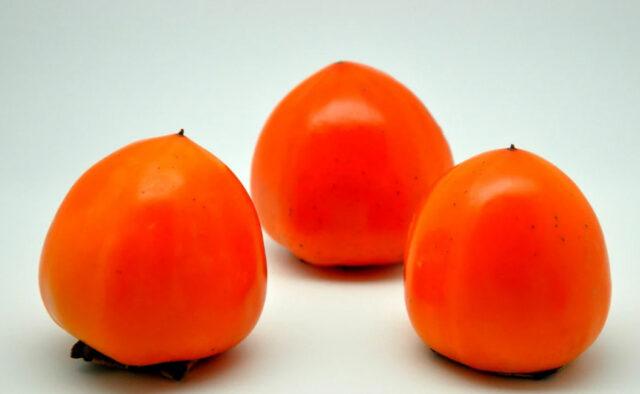
Jujube is often made from persimmons of the Medovaya variety.
No less useful are the roots of the tree, which contain naphthoquinones, which have a lot of medicinal properties.
The benefits and harms of honey persimmon
The benefits of this variety can be judged by its rich composition.
Pectin improves the functioning of the gastrointestinal tract, regulates peristalsis and prevents constipation. Fiber gently cleanses the intestines. Ascorbic acid increases immunity, and B vitamins and retinol strengthen eyesight, stimulate the brain.
Due to the presence of naphthoquinones, persimmon prevents the development of oncology. Beta-carotene prevents the oxidation of free radicals, which has a positive effect on the dynamics of cancer.
Also, the fruits are useful for disorders of the cardiovascular and musculoskeletal system, as they are known for their high content of magnesium and calcium. The berries of this tree are recommended for kidney diseases. It is a natural diuretic.
The consumption of sweet fruits contributes to the increased production of endorphins, thereby improving the emotional background. It is a pleasant and delicious way to deal with stress and seasonal depression.
The iron contained in fruits is involved in the processes of hematopoiesis, so they are indispensable for anemia. Doctors recommend actively using Honey persimmon in the off-season with vitamin deficiency. The variety is also useful for pregnant women, since it contains iodine and folic acid necessary for expectant mothers.
Nutritionists advise eating not only ripe, but also slightly unripe specimens. They are capable of:
- improve blood clotting;
- to raise the general tone;
- quickly remove toxins;
- inhibit inflammatory processes.
Juice is often used during colds as an expectorant and antimicrobial agent.
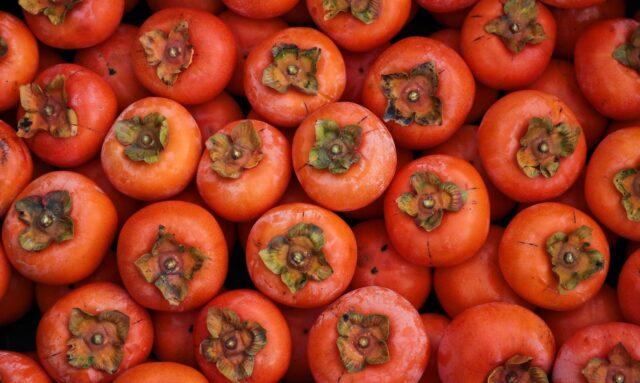
Persimmon Honey - a powerful weapon against vitamin deficiency
Persimmon can be used to make not only preserves, jams and marmalades. It is dried, made from it a useful vitamin juice, which is used, for example, in the treatment of scurvy. A healthy tea rich in ascorbic acid is brewed from small unripe specimens. Dry fruits are ground into powder, with the help of which the skin is cleansed of age spots.
Contraindications to the use of persimmon Honey
However, the use of this variety has a number of limitations. Persimmon Honey is prohibited for the following diseases:
- diabetes;
- stomach ulcer;
- allergy.
Do not use it for people who have had stomach surgery.
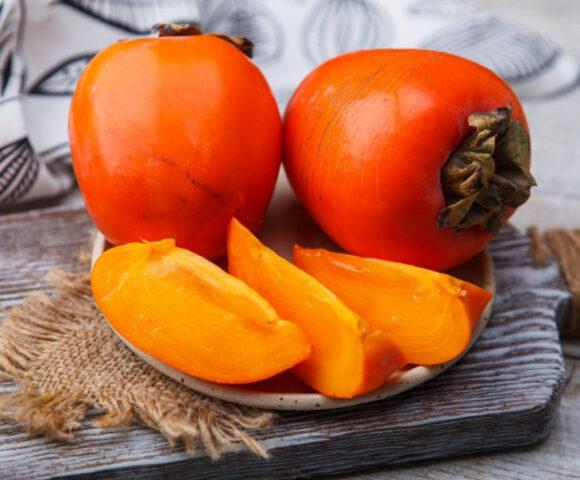
You need to try persimmon from small portions in order to understand whether there is an allergy to the fetus
This fetus can cause intestinal obstruction. Persimmons should not be introduced into the diet of children under one year old, it can cause allergic reactions, diarrhea and dehydration.
Conclusion
Persimmon Honey, or tangerine, is a fruit unique in its composition. This is not just a tasty treat, but also an additional aid in the treatment of many diseases. However, its use is associated with a number of contraindications that must be remembered before introducing the fruits into the daily diet.
Reviews of persimmon Honey
